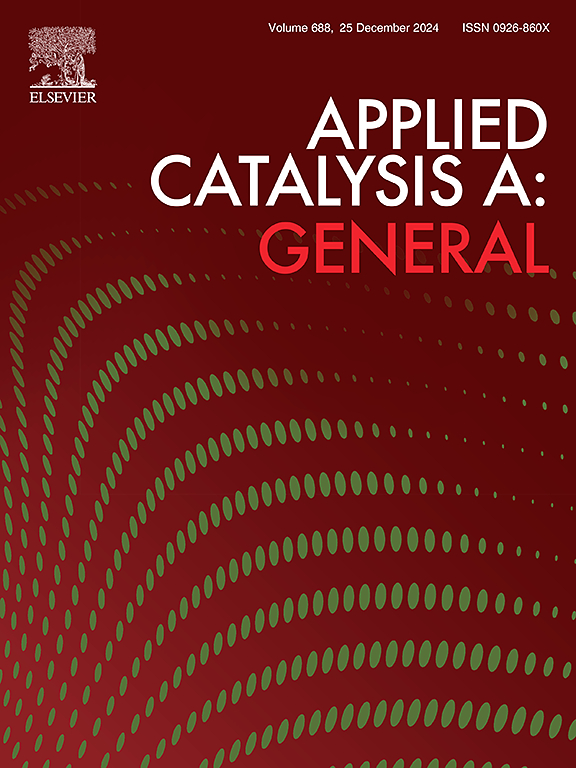Hydrodeoxygenation of methyl laurate over the sulfur-free Ni/γ-Al2O3 catalysts
Release time:2024-12-01
Hits:

- Impact Factor:
- 5.706
- DOI number:
- 10.1016/j.apcata.2018.10.014
- Affiliation of Author(s):
- 重庆工商大学
- Teaching and Research Group:
- 材料科学与工程系
- Journal:
- Applied Catalysis A: General
- Funded by:
- 重庆市科技局
- Key Words:
- Ni/γ-Al2O3 catalysts;Methyl laurate;Catalytic hydrogenation;Hydrodeoxygenation (HDO)
- Abstract:
- A series of sulfur-free Ni/γ-Al2O3 catalysts with different metal Ni loading amount were prepared by impregnation method. The prepared catalysts and corresponding precursors were investigated through XRD, BET, H2-TPD, and H2-TPR analysis methods. The effect of Ni loading on catalytic performance of Ni/γ-Al2O3 catalysts was evaluated by methyl laurate catalytic hydrodeoxygenation (HDO). Results indicate that the catalytic HDO performance of the prepared Ni/γ-Al2O3 catalysts was directly related to hydrogen storage properties, hydrogen desorption properties, dispersion of the active component Ni, and so on. The 10 wt.% Ni/γ-Al2O3 catalyst exhibits the best HDO performance, and the methyl laurate conversion can reach 91.1% when the reaction temperature is 400 °C and pressure is 2 MPa. The HDO products are alkanes, such as C<10, C10, C11, C12 alkane, C12 alcohol, and C12 acid, especially. The main product C11 alkane with one carbon less is formed by decarbonylation/decarboxylation, and selectivity can reach 68.6%. The effects of reaction conditions on HDO reaction of oils were studied, for example, reaction pressure and H2/Oil ratio. The catalyst retains comparable activity upon regeneration through calcinations and H2 reduction.
- First Author:
- Shuang Chen
- Co-author:
- Hongmei Xie,Zhaojie Jiao
- Indexed by:
- 源刊论文
- Correspondence Author:
- Guilin Zhang,Xianming Zhang
- Discipline:
- Engineering
- Document Type:
- Journal Article
- Volume:
- 569
- Page Number:
- 35–44
- Translation or Not:
- no
- Date of Publication:
- 2019-01-09
- Included Journals:
- SCI
- Links to published journals:
- https://doi.org/10.1016/j.apcata.2018.10.014



